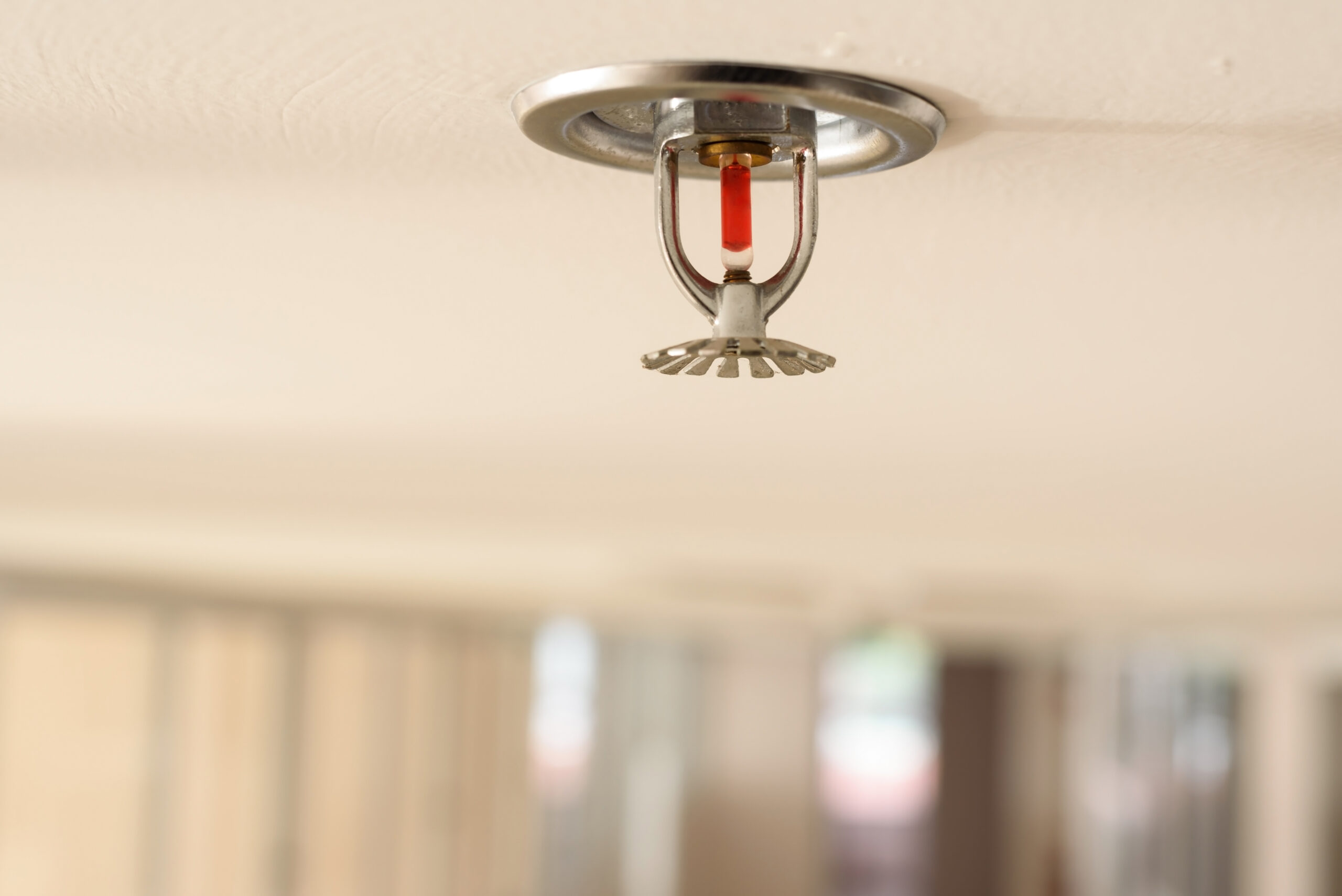How Fire Sprinklers Work

Installing a fire sprinkler system in your commercial property is a simple, reliable, and proven way to protect and save lives and property. While fire sprinklers are common in most buildings, many people don’t understand how they work.
Fire Sprinklers 101
A study released by the National Fire Protection Association (NFPA) shows that when sprinklers are present during a fire, civilian fire death and injury rates per fire are nearly 90% and 30% lower, respectively; first responder injuries per fire were 60% lower.
To best understand how a fire sprinkler system works, it helps to know the equipment’s various components.
- Sprinkler heads: The most prevalent type of sprinkler head has a plug held in place by a trigger mechanism, usually a glass ampule or vial containing a glycerin-based liquid that expands when heated. A less common trigger is made up of two metal plates soldered together. When the solder melts from a fire’s heat, two spring arms pull the plates apart and release the plug.
- Pressurized fire suppressant released: When the liquid inside the sprinkler’s ampule reaches a specific temperature, typically 155 degrees Fahrenheit, the vial breaks and causes a valve to open, allowing pressurized water to flow out and douse the fire. Some buildings use special hazard fire suppression systems like FM-200, Halon, and dry chemicals that extinguish fires in areas where water could cause irreparable damage, such as server or document storage rooms.
- Fire extinguished: Once the pressurized water forces out the sprinkler head’s plug, the water sprays over a deflector plate that’s designed to distribute it in an even pattern. The water continues to flow until the main valve is manually shut off.
Fire sprinklers are not triggered by smoke and don’t go off all at once. If they were, something as basic as burning toast in an employee break room could be enough to trigger the system. It’s the high heat within the smoke that sets off the sprinklers.
They also don’t all release water at the same time. Instead, they function individually, confining water damage to the area where the fire started. Often, a fire can be extinguished by just one or two activated heads.
How an Uncontrolled Fire Spreads
Understanding how a fire spreads can be critical to fighting it effectively. Here’s how a fire typically escalates and how a sprinkler system stops it:
- Smoke & toxic gases rise from the fire’s source: They spread quickly along the ceiling, heating the room’s air and forcing a veil of deadly gases down the walls. It only takes a few minutes for the air to become so hot that the room’s contents will ignite spontaneously, a process known as “flashover” that occurs between 1,000 and 1,500 degrees Fahrenheit.
- As the fire increases the air temperature above it, it heats the nearest sprinkler head(s), triggering them to release water: The immediate cooling of the heat source usually prevents surrounding sprinkler heads from activating.
Confires Is Your Fire Sprinkler Partner
Whether you need to install a small commercial fire sprinkler system or your current system needs inspection, maintenance, or repair, Confires can help.
Our knowledgeable and trusted team provides outstanding fire protection services for New Jersey, northern Delaware, and eastern Pennsylvania businesses.
Request a quote for fire sprinkler services by calling 888-228-0917 today.
Category: Fire Sprinklers